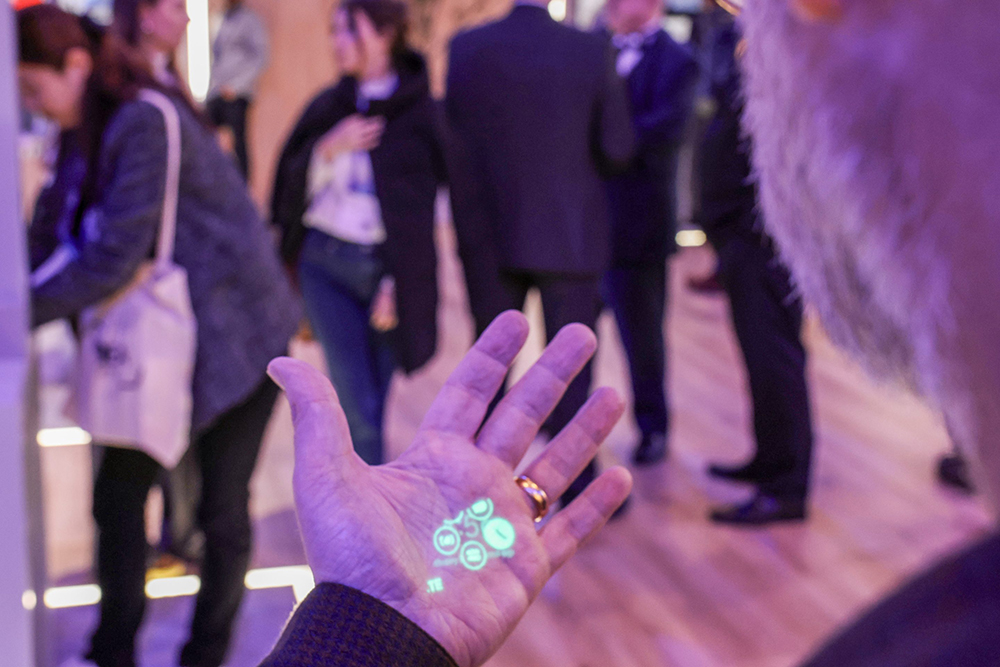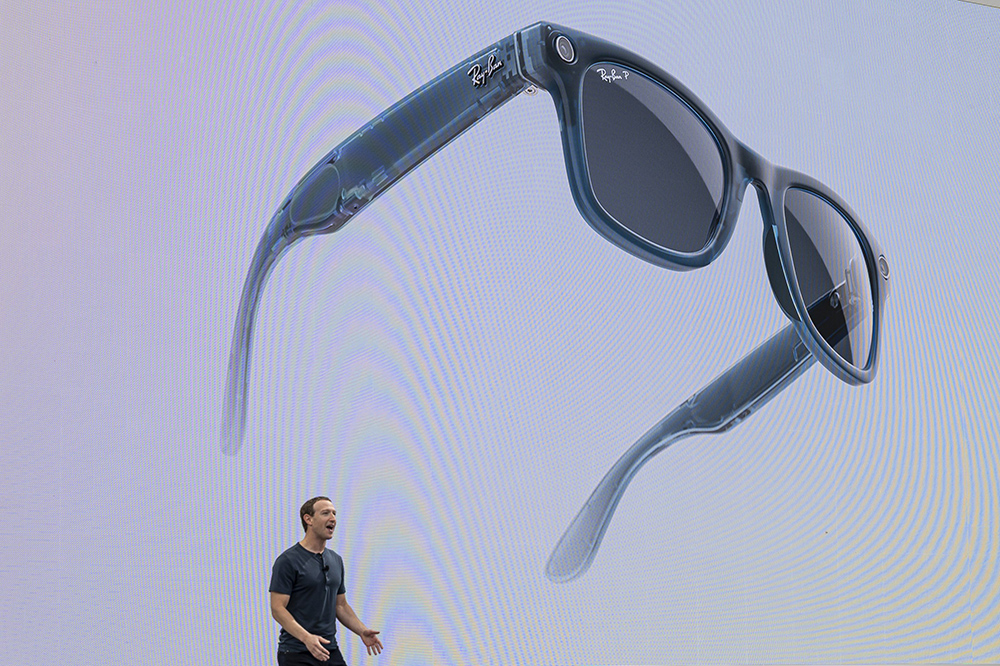
我们无法预测人工智能将以何种方式改变生活,但毋庸置疑的是,虚拟助手将帮助我们驾驭这个美丽新世界。其中一些虚拟助手将内置在智能手机中,但大大小小的公司也都希望消费者能为额外的人工智能小工具找到存储空间,也许其中一些小工具最终会完全脱离手机。
这一类别产品的起步并不顺利,原因是今年最受期待的几款人工智能设备都铩羽而归。
首先是Humane公司的AI Pin,这款售价699美元、月费24美元的胸针可以将图像投射到用户的手上。这款火柴盒大小的设备本应让人们摆脱对智能手机的依赖,但却因成本高、性能差而遭到评论家的抨击。然后是售价199美元的手持设备Rabbit R1,它可以回答问题并识别摄像头看到的事物。评论家们对Rabbit R1的评价比较友善,但仍然质疑它的意义,因为手机如今也能做很多同样的事情。
那么,什么才是理想的人工智能小工具呢?最优设计是否会释放出全能的人工智能精灵?抑或是我们现有的装备之一,通过人工智能赋能变得更有用?
Canalys的研究分析师杰克·莱瑟姆(Jack Leathem)表示:“在消费电子行业,人们普遍在为新的大型语言模型(LLM)寻找最佳的硬件应用程序。”随着各公司竞相研发制胜秘诀,预计会进行大量试错。

听觉和视觉相关的小工具
有些人认为,答案就是专注于特定任务。Limitless和Tab AI这两家获得风险投资的初创公司正在开发智能吊坠,可以聆听佩戴者的对话,并将其转录成数字形式。
苹果(Apple)和谷歌(Google)正在寻求将现有的耳机和健身手环等可穿戴设备变成人工智能小工具。据彭博社报道,以苹果的无线耳机AirPods为例,这可能需要在耳机中集成微型摄像头,这样人工智能就可以对各种刺激做出反应。
脸书(Facebook)母公司Meta提供了一个很有前景的方法。去年年底,Meta推出了与法意眼镜巨头EssilorLuxottica合作的第二代产品:雷朋(Ray-Ban)Meta智能眼镜。
Wayfarer版眼镜和汤姆·克鲁斯(Tom Cruise)、泰勒·斯威夫特(Taylor Swift)以及其他流行文化偶像佩戴的经典款几乎一模一样。然而,这款眼镜的镜框内嵌有一个微型摄像头、一个无线芯片和其他组件,这些组件允许用户播放网络直播和聆听音乐。今年4月,Meta在北美版眼镜增加了人工智能功能——这一微小但至关重要的调整将这款眼镜从极客新奇物品变成了免提超级产品的基础。
有了人工智能,这款眼镜让我们得以一窥“多模态”人工智能改变游戏规则的潜力:想知道你在市场上买到的一块新鲜三文鱼有什么美味食谱吗?只需看着它,说出几个词就能唤起人工智能的专业知识——无需拿出手机或在谷歌引擎中输入问题。根据评论,这种体验仍有点笨拙——放大特定物体并不容易,而且人工智能本身也和其他聊天机器人一样容易出错,但其潜力是显而易见的。
据The Verge网站报道,Meta首席技术官安德鲁·博斯沃思(Andrew Bosworth)今年6月在一份内部备忘录中写道:“我们目前拥有市场上领先的人工智能设备,但仍将加倍努力,寻找适合可穿戴Meta AI的强大产品市场契合点,围绕它开展业务,并扩大受众范围。”
你愿意付多少钱?
Meta并未透露其智能眼镜的销量。佛罗斯特研究研究公司(Forrester)的分析师托马斯·胡森(Thomas Husson)认为,联网眼镜仍是一种小众产品,并指出小工具并非Meta的强项。他说:“这是脸书展示其技术和创新形象的一种方式。”
不过,Canalys的莱瑟姆说,如果Meta的眼镜受到大众欢迎,该公司将获得巨大收益:“这种整合将使Meta的人工智能成为主要助手,而不是其他供应商设备中的次要助手。”

总部位于新加坡的Brilliant Labs首席执行官博巴克·塔万加尔(Bobak Tavangar)表示,人工智能小工具是如此个性化,它们必须“开放、可修改、可检查”。这意味着开源设计和可选择的大型语言模型。他的公司最近推出的Frame智能眼镜配备了一个人工智能助手,该助手利用OpenAI、Stability AI和Perplexity的人工智能模型的功能,包括翻译、搜索和对周围环境的视觉分析。
塔万格说,Brilliant Labs在头几天就售出了数千副售价349美元的智能眼镜。他认为,像Meta这样以广告业务为主的公司并不适合推出新一代人工智能设备,因为消费者会担心眼镜获取的个人数据会被输入巨大的广告引擎。
Meta没有回答《财富》杂志关于将智能眼镜数据用于广告目的的问题,不过该公司的隐私政策似乎允许这样做。事实上,据The Verge网站7月19日报道,Meta在网络广告领域的最大竞争对手谷歌也一直在与EssilorLuxottica讨论将其Gemini人工智能助手植入未来眼镜的事宜。多家媒体报道称,Meta正准备收购这家眼镜公司约5%的股份。
随着人工智能小工具的发展,商业模式可能被证明与硬件设计同样重要:毕竟,如果小工具制造商不能赚取广告收入,就可能不得不以更高的价格出售产品,或者像Brilliant Labs打算做的那样,对使用人工智能服务收取月费。
尽管人工智能可以完成很多实用任务,但还不能抛开经济效益不谈。(财富中文网)
译者:中慧言-王芳
我们无法预测人工智能将以何种方式改变生活,但毋庸置疑的是,虚拟助手将帮助我们驾驭这个美丽新世界。其中一些虚拟助手将内置在智能手机中,但大大小小的公司也都希望消费者能为额外的人工智能小工具找到存储空间,也许其中一些小工具最终会完全脱离手机。
这一类别产品的起步并不顺利,原因是今年最受期待的几款人工智能设备都铩羽而归。
首先是Humane公司的AI Pin,这款售价699美元、月费24美元的胸针可以将图像投射到用户的手上。这款火柴盒大小的设备本应让人们摆脱对智能手机的依赖,但却因成本高、性能差而遭到评论家的抨击。然后是售价199美元的手持设备Rabbit R1,它可以回答问题并识别摄像头看到的事物。评论家们对Rabbit R1的评价比较友善,但仍然质疑它的意义,因为手机如今也能做很多同样的事情。
那么,什么才是理想的人工智能小工具呢?最优设计是否会释放出全能的人工智能精灵?抑或是我们现有的装备之一,通过人工智能赋能变得更有用?
Canalys的研究分析师杰克·莱瑟姆(Jack Leathem)表示:“在消费电子行业,人们普遍在为新的大型语言模型(LLM)寻找最佳的硬件应用程序。”随着各公司竞相研发制胜秘诀,预计会进行大量试错。
听觉和视觉相关的小工具
有些人认为,答案就是专注于特定任务。Limitless和Tab AI这两家获得风险投资的初创公司正在开发智能吊坠,可以聆听佩戴者的对话,并将其转录成数字形式。
苹果(Apple)和谷歌(Google)正在寻求将现有的耳机和健身手环等可穿戴设备变成人工智能小工具。据彭博社报道,以苹果的无线耳机AirPods为例,这可能需要在耳机中集成微型摄像头,这样人工智能就可以对各种刺激做出反应。
脸书(Facebook)母公司Meta提供了一个很有前景的方法。去年年底,Meta推出了与法意眼镜巨头EssilorLuxottica合作的第二代产品:雷朋(Ray-Ban)Meta智能眼镜。
Wayfarer版眼镜和汤姆·克鲁斯(Tom Cruise)、泰勒·斯威夫特(Taylor Swift)以及其他流行文化偶像佩戴的经典款几乎一模一样。然而,这款眼镜的镜框内嵌有一个微型摄像头、一个无线芯片和其他组件,这些组件允许用户播放网络直播和聆听音乐。今年4月,Meta在北美版眼镜增加了人工智能功能——这一微小但至关重要的调整将这款眼镜从极客新奇物品变成了免提超级产品的基础。
有了人工智能,这款眼镜让我们得以一窥“多模态”人工智能改变游戏规则的潜力:想知道你在市场上买到的一块新鲜三文鱼有什么美味食谱吗?只需看着它,说出几个词就能唤起人工智能的专业知识——无需拿出手机或在谷歌引擎中输入问题。根据评论,这种体验仍有点笨拙——放大特定物体并不容易,而且人工智能本身也和其他聊天机器人一样容易出错,但其潜力是显而易见的。
据The Verge网站报道,Meta首席技术官安德鲁·博斯沃思(Andrew Bosworth)今年6月在一份内部备忘录中写道:“我们目前拥有市场上领先的人工智能设备,但仍将加倍努力,寻找适合可穿戴Meta AI的强大产品市场契合点,围绕它开展业务,并扩大受众范围。”
你愿意付多少钱?
Meta并未透露其智能眼镜的销量。佛罗斯特研究研究公司(Forrester)的分析师托马斯·胡森(Thomas Husson)认为,联网眼镜仍是一种小众产品,并指出小工具并非Meta的强项。他说:“这是脸书展示其技术和创新形象的一种方式。”
不过,Canalys的莱瑟姆说,如果Meta的眼镜受到大众欢迎,该公司将获得巨大收益:“这种整合将使Meta的人工智能成为主要助手,而不是其他供应商设备中的次要助手。”
总部位于新加坡的Brilliant Labs首席执行官博巴克·塔万加尔(Bobak Tavangar)表示,人工智能小工具是如此个性化,它们必须“开放、可修改、可检查”。这意味着开源设计和可选择的大型语言模型。他的公司最近推出的Frame智能眼镜配备了一个人工智能助手,该助手利用OpenAI、Stability AI和Perplexity的人工智能模型的功能,包括翻译、搜索和对周围环境的视觉分析。
塔万格说,Brilliant Labs在头几天就售出了数千副售价349美元的智能眼镜。他认为,像Meta这样以广告业务为主的公司并不适合推出新一代人工智能设备,因为消费者会担心眼镜获取的个人数据会被输入巨大的广告引擎。
Meta没有回答《财富》杂志关于将智能眼镜数据用于广告目的的问题,不过该公司的隐私政策似乎允许这样做。事实上,据The Verge网站7月19日报道,Meta在网络广告领域的最大竞争对手谷歌也一直在与EssilorLuxottica讨论将其Gemini人工智能助手植入未来眼镜的事宜。多家媒体报道称,Meta正准备收购这家眼镜公司约5%的股份。
随着人工智能小工具的发展,商业模式可能被证明与硬件设计同样重要:毕竟,如果小工具制造商不能赚取广告收入,就可能不得不以更高的价格出售产品,或者像Brilliant Labs打算做的那样,对使用人工智能服务收取月费。
尽管人工智能可以完成很多实用任务,但还不能抛开经济效益不谈。(财富中文网)
译者:中慧言-王芳
It’s impossible to predict all the ways in which AI will change our lives, but one sure bet is that virtual assistants will help us navigate this brave new world. Some will be built into our smartphones, but companies big and small also hope consumers will find space for an extra AI-powered gadget—and perhaps eventually ditch their phones altogether.
The category has not started off so well, as some of the most eagerly awaited AI-powered devices to land this year have done so with a resounding thud.
First, there was the Humane AI Pin, a $699-plus-$24-a-month lapel pin that projected images onto a user’s hand. The matchbook-size device was supposed to wean people off their smartphones, but was instead lambasted by reviewers for its cost and poor performance. Then came the Rabbit R1, a $199 handheld gadget that could answer questions and identify things its camera saw. Critics were kinder to the Rabbit, but still asked what its point was, since our phones can now do much the same.
So what is the ideal AI gadget? Is the optimal design something that unleashes an all-powerful AI genie? Or is it one of our existing accoutrements, made more useful with a dash of AI?
There’s a broad “scramble within the consumer electronics industry to find the best applications for new large language models [LLMs] within hardware,” says Jack Leathem, a research analyst at Canalys. Expect a lot of trial and error as companies compete to devise the winning recipe.
A gadget with ears and eyes
Some are betting the answer is to focus on specific tasks. Limitless and Tab AI, two venture-funded startups, are developing smart pendants that will listen to the wearer’s conversations and transcribe them into digital form.
Apple and Google are looking to turn existing wearables like earbuds and fitness bands into AI gadgets. In the case of Apple’s wireless AirPods, that could entail integrating tiny cameras into the earbuds so that the AI can respond to all manner of stimuli, Bloomberg reported.
One promising approach comes from Facebook parent Meta. Late last year, Meta launched the second generation of its collaboration with French-Italian eyewear giant EssilorLuxottica: the Ray-Ban Meta smart glasses.
The Wayfarer version looks virtually identical to the classic shades sported by Tom Cruise, Taylor Swift, and other pop culture icons. Tucked inside the frames, however, are a tiny camera, a wireless chip, and other components that allow users to broadcast live video streams and listen to music. In April, Meta added AI capabilities to the North American version—a small but crucial tweak that transformed the specs from a geeky novelty item into the foundation for a hands-free superpower.
With AI aboard, the glasses offer a glimpse of the game-changing potential in “multimodal” AI: Wondering what a good recipe might be for that fresh slab of salmon you found at the market? Just look at it and summon the AI’s expertise by uttering a few words—no need to pull out your phone, or type into Google. The experience can still be a bit clunky, according to reviews—zooming in on a specific object is not easy, and the AI itself is as error-prone as any other chatbot—but the potential is clear.
“We have the leading AI device on the market right now, and we are doubling down on finding strong product-market fit for wearable Meta AI, building a business around it, and expanding the audience,” Meta chief technology officer Andrew Bosworth wrote in an internal memo in June, according to the Verge.
How much would you pay?
Meta hasn’t disclosed the number of smart glasses it has sold. Forrester analyst Thomas Husson believes connected glasses are still a niche product and notes that gadgets are not Meta’s strong suit. “It’s a way for Facebook to showcase its technology and to appear innovative,” he says.
If Meta’s glasses catch on with the masses, however, Canalys’s Leathem says, the company could reap big benefits: “This integration would position Meta’s AI as the primary assistant, rather than a secondary one within another vendor’s device.”
Bobak Tavangar, CEO of Singapore-based Brilliant Labs, says AI gadgets are so personal that they must be “open and modifiable and inspectable.” That means open-source designs and a choice of LLMs. His company’s recently launched Frame smart glasses feature an AI assistant that draws its powers—including translation, search, and visual analysis of one’s surroundings—from AI models made by OpenAI, Stability AI, and Perplexity.
Brilliant Labs sold thousands of the $349 smart glasses in the first couple days, Tavangar says. He believes that companies with advertising-based businesses, like Meta, are ill-suited for the new generation of AI devices, since consumers will worry that personal data captured by the spectacles will be fed into a giant advertising engine.
Meta didn’t respond to Fortune’s question about using smart-glasses data for advertising purposes, though its privacy policy appears to allow it. Indeed, The Verge reported Friday that Meta’s big rival in online advertising, Google, has also been talking to EssilorLuxottica about putting its Gemini AI assistant into future shades. Multiple outlets have reported that Meta is preparing to buy a stake of roughly 5% in the eyewear house.
As AI gadgets evolve, business models could prove as important as hardware design: After all, if a gadget maker isn’t earning ad revenue, it will likely have to sell the product at a higher price or, as Brilliant Labs intends to do, charge a monthly fee for access to AI services.
AI can do a lot of nifty things, but it can’t eliminate economics—yet.






